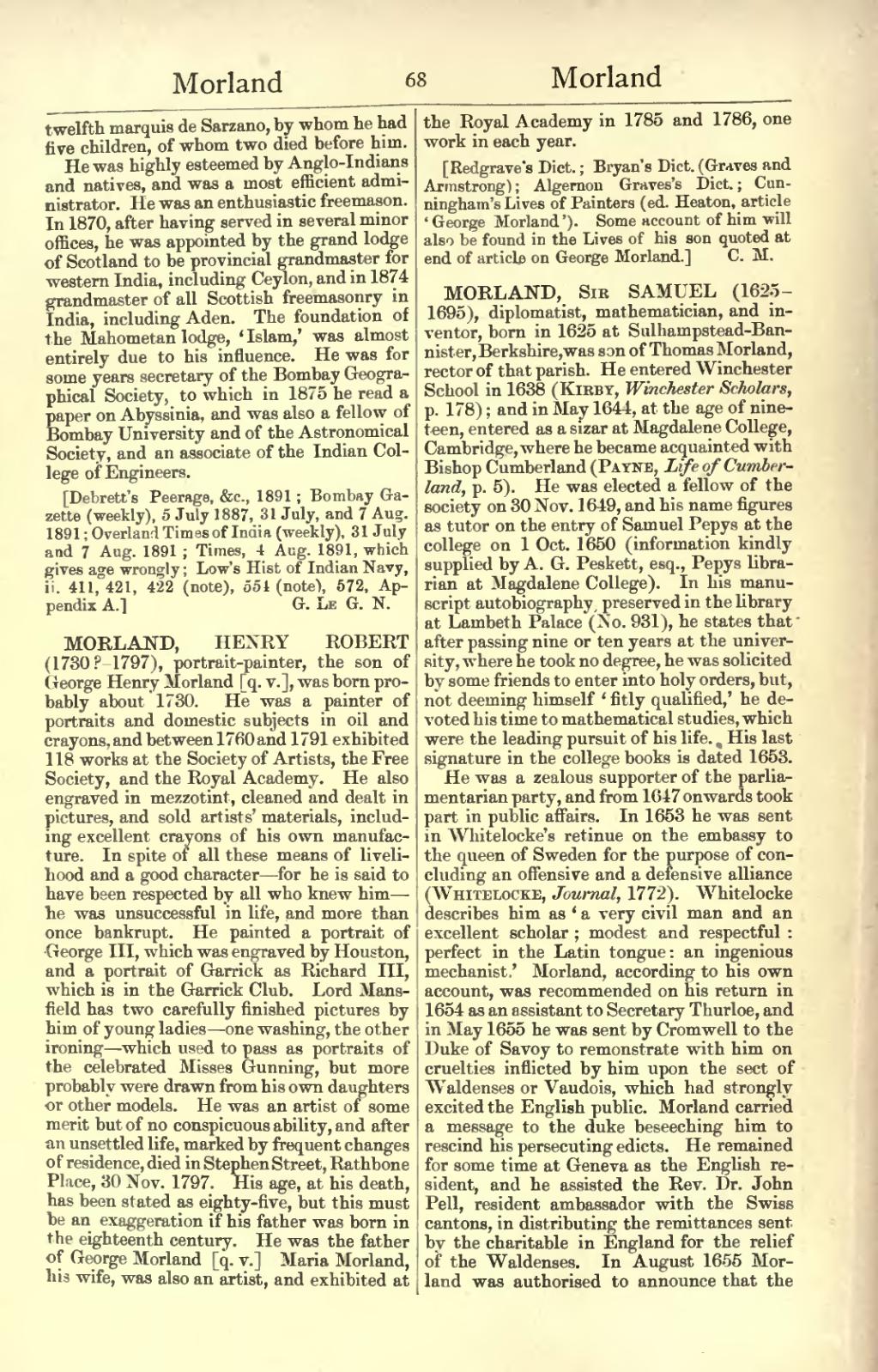twelfth marquis de Sarzano, by whom he had five children, of whom two died before him.
He was highly esteemed by Anglo-Indians and natives, and was a most efficient administrator. He was an enthusiastic freemason. In 1870, after having served in several minor offices, he was appointed by the grand lodge of Scotland to be provincial grandmaster for western India, including Ceylon, and in 1874 grandmaster of all Scottish freemasonry in India, including Aden. The foundation of the Mahometan lodge, 'Islam,' was almost entirely due to his influence. He was for some years secretary of the Bombay Geographical Society, to which in 1875 he read a paper on Abyssinia, and was also a fellow of Bombay University and of the Astronomical Society, and an associate of the Indian College of Engineers.
[Debrett's Peerage, &c., 1891; Bombay Gazette (weekly), 5 July 1887, 31 July, and 7 Aug. 1891; 'Overland Times of India (weekly), 31 July and 7 Aug. 1891; Times, 4 Aug. 1891, which gives age wrongly; Low's Hist. of Indian Navy, ii. 411,421, 422 (note), 551 (note), 572, Appendix A.]
MORLAND, HENRY ROBERT (1730?–1797), portrait-painter, the son of George Henry Morland [q. v.], was born probably about 1730. He was a painter of portraits and domestic subjects in oil and crayons, and between 1760 and 1791 exhibited 118 works at the Society of Artists, the Free Society, and the Royal Academy. He also engraved in mezzotint, cleaned and dealt in pictures, and sold artists' materials, including excellent crayons of his own manufacture. In spite of all these means of livelihood and a good character for he is said to have been respected by all who knew him he was unsuccessful in life, and more than once bankrupt. He painted a portrait of George III, which was engraved by Houston, and a portrait of Garrick as Richard III, which is in the Garrick Club. Lord Mansfield has two carefully finished pictures by him of young ladies one washing, the other ironing which used to pass as portraits of the celebrated Misses Gunning, but more probably were drawn from his own daughters or other models. He was an artist of some merit but of no conspicuous ability, and after an unsettled life, marked by frequent changes of residence, died in Stephen Street, Rathbone Place, 30 Nov. 1797. His age, at his death, has been stated as eighty-five, but this must be an exaggeration if his father was born in the eighteenth century. He was the father of George Morland [q. v.] Maria Morland, his wife, was also an artist, and exhibited at the Royal Academy in 1785 and 1786, one work in each year.
[Redgrave's Dict.; Bryan's Dict. (Graves and Armstrong); Algernon Graves's Dict.; Cunningham's Lives of Painters (ed. Heaton, article ‘George Morland’). Some account of him will also be found in the Lives of his son quoted at end of article on George Morland.]
MORLAND, Sir SAMUEL (1625–1695), diplomatist, mathematician, and inventor, born in 1625 at Sulhampstead-Bannister, Berkshire, was son of Thomas Morland, rector of that parish. He entered Winchester School in 1638 (Kirby, Winchester Scholars, p. 178); and in May 1644, at the age of nineteen, entered as a sizar at Magdalene College, Cambridge, where he became acquainted with Bishop Cumberland (Payne, Life of Cumberland, p. 5). He was elected a fellow of the society on 30 Nov. 1649, and his name figures as tutor on the entry of Samuel Pepys at the college on 1 Oct. 1650 (information kindly supplied by A. G. Peskett, esq., Pepys librarian at Magdalene College). In his manuscript autobiography, preserved in the library at Lambeth Palace (No. 931), he states that' after passing nine or ten years at the university, where he took no degree, he was solicited by some friends to enter into holy orders, but, not deeming himself 'fitly qualified,' he devoted his time to mathematical studies, which were the leading pursuit of his life. His last signature in the college books is dated 1653.
He was a zealous supporter of the parliamentarian party, and from 1647 onwards took part in public affairs. In 1653 he was sent in Whitelocke's retinue on the embassy to the queen of Sweden for the purpose of concluding an offensive and a defensive alliance (Whitelocke, Journal, 1772). Whitelocke describes him as 'a very civil man and an excellent scholar; modest and respectful: perfect in the Latin tongue: an ingenious mechanist,' Morland, according to his own account, was recommended on his return in 1654 as an assistant to Secretary Thurloe, and in May 1655 he was sent by Cromwell to the Duke of Savoy to remonstrate with him on cruelties inflicted by him upon the sect of Waldenses or Vaudois, which had strongly excited the English public. Morland carried a message to the duke beseeching him to rescind his persecuting edicts. He remained for some time at Geneva as the English resident, and he assisted the Rev. Dr. John Pell, resident ambassador with the Swiss cantons, in distributing the remittances sent by the charitable in England for the relief of the Waldenses. In August 1655 Morland was authorised to announce that the
